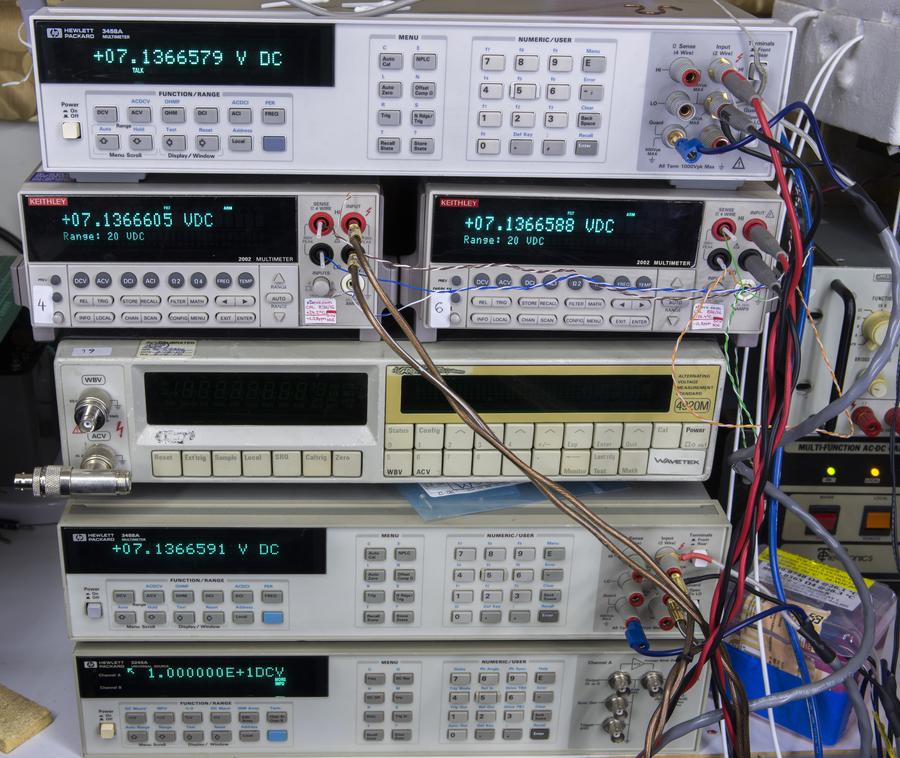3458B in the house...finally, after 3 months of travel, remote calibration, ebaying and replacing boards, unit from this thread joined the pack.
Stashed it on top of poor 2002's, powered on, connected LTZ reference have currently online (I keep them all stored "cold", only power on for a week one at a time to do measurement), and here's what we see after 20 minutes runtime...

For those who don't play with
ppm-calculator every day, here's the distilled data from photo:
LTZ module recorded value :
+7.13665729 VDC, reference value obtained from comparison to F732B calibrated within 10 days to +/-0.55ppm in August 2016.
Bottom 3458A, this is my original rusty meter, never left homelab, DIY calibration transferred from K2002s from
7VDC cal. Reading is
+7.1366591 V,
+0.254 ppmK2002 (GPIB 4) - handcarried and calibrated in August 2016. Reading is
+7.1366605 V,
+0.450 ppmK2002 (GPIB 6) - handcarried and calibrated in August 2016. Reading is
+7.1366588 V,
+0.212 ppmTop 3458A - is this unit from thread. Reading is
+7.1366579 V,
+0.086 ppmCan I say now that I've joined sub-ppm 10DCV accuracy club?

